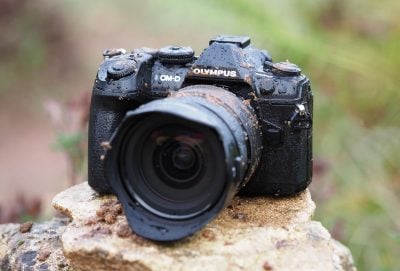Olympus OMD EM1 Mark II review
-
-
Written by Gordon Laing
Quality
To evaluate the real-life quality of the Olympus OMD EM1 Mark II, I shot this outdoor scene with it and the original OMD EM1 Mark I both using the same Leica 25mm f1.4 lens, closed to f4 for optimal quality for this format. I additionally shot the same scene moments later with the Fujifilm XT2, fitted with the XF 35mm f2 prime, closed to f5.6 for optimal quality on this format. I shot with each camera in RAW+JPEG mode with the default settings. I’m waiting for full support from Adobe before comparing RAW files, so for now I’m presenting JPEGs straight out-of-camera. As always the crops below are taken from the areas marked with red rectangles and are presented here at 100%.
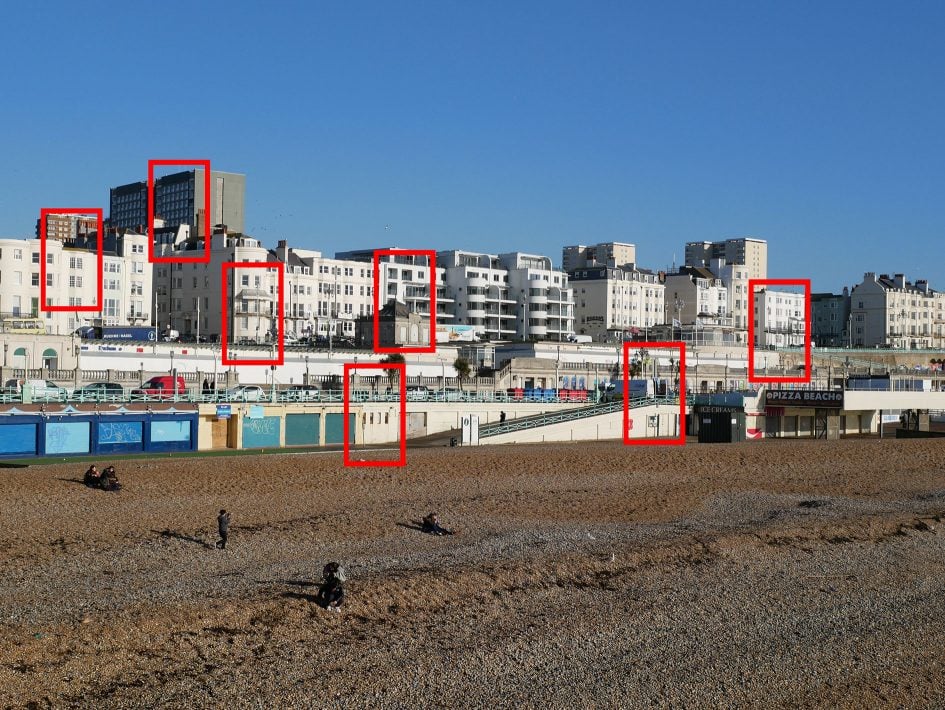
Note the Micro Four Thirds bodies capture 4:3 shaped images in their native format, while the Fujifilm XT2 captures wider 3:2 shaped images. As such it’s not possible to make an absolute like-for-like comparison between them, and there’s the added complication of different field-reduction factors. That said, the Leica 25mm on Micro Four Thirds and the XF 35mm on an APS-C body delivered similar imaging circle sizes and as both lenses are roughly comparable in quality – especially closed to the apertures used here – I feel it’s a fair comparison. If you don’t, simply ignore the Fuji crops and just look at the first two columns which are from bodies sharing the same format and lens.
From left to right below you’re looking at crops from the original Olympus OMD EM1 Mark I with 16 Megapixels, the new Olympus OMD EM1 Mark II with 20 Megapixels and the Fujifilm XT2 with 24 Megapixels. As such, the cropped area becomes smaller from left to right, but are you seeing more real-life detail with each jump in sensor resolution?
Starting with the first two columns which compare the Mark I and Mark II versions of the OMD EM1, you’ll have to look very closely to spot any additional detail from the new model. It’s most noticeable in the finest grills, railings and signage, and easiest to see in the fifth row, but it remains subtle to say the least. Of course this is just one comparison using JPEGs and while the lens is high quality, it is an ageing model. But the bottom line is the OMD EM1 Mark II’s extra four Megapixels over the original model aren’t going to make a huge difference in real-life resolving power. What does make a difference between the old and new models though – under the right situations – is the Hi Res capture mode on the Mark II. If the subject stays static during the capture period, and you’re careful with your technique (which includes using a tripod, a razor sharp lens at an optimal aperture and a timed delay), you will capture an image with genuinely more detail. I have examples of this in the main review.
Returning to the crops below though, the 24 Megapixels of the Fujifilm XT2 deliver a more decisive lead over the original 16 Megapixel EM1 Mark I, although as you’d expect, there’s less of a difference between the XT2 and 20 Megapixel EM1 Mark II. In the results here the XT2 manages to slightly out-resolve the EM1 Mark II when both are capturing single frames, but again then Olympus has the advantage of the Hi res mode which, under the right conditions, will jump a little ahead of the Fujifilm.
In a second table below the first set of results, I’ve swapped the EM1 Mark I column for one showing the Panasonic Lumix G80 / G85, which may share the same 16 Megapixel resolution, but using a sensor that dispenses with the optical low pass filter. I’d say this has given it the benefit of resolving fractionally finer detail, again best see in in the grills on the fifth row. But again we’re talking about pixel-peeping in most cases. Scroll down for my OMD EM1 II noise results or skip to my OMD EM1 II sample images!
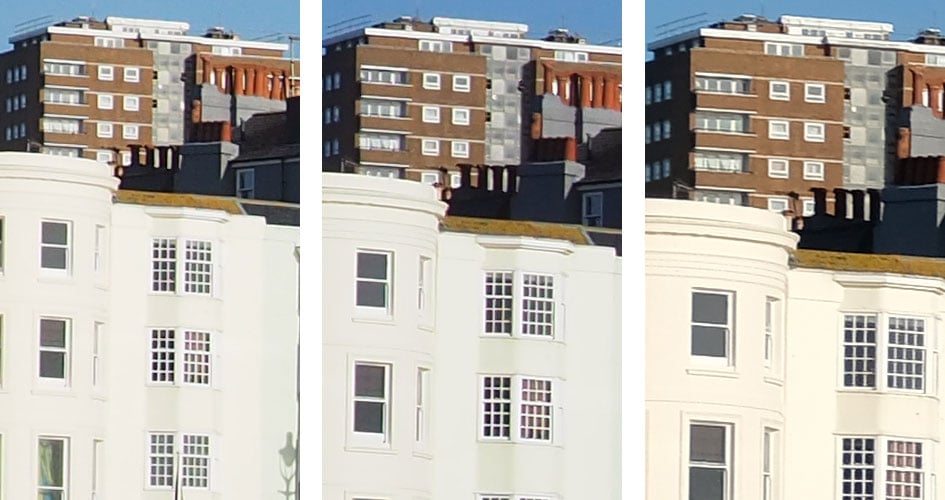
Above left: Olympus OMD EM1 (JPEG) using Leica 25mm f1.4 at f4, 200 ISO. Above center: Olympus OMD EM1 Mark II (JPEG) using Leica 25mm f1.4 at f4, 200 ISO. Above right: Fujifilm XT2 (JPEG) using Fujinon XF 35mm f2 at f5.6, 200 ISO.
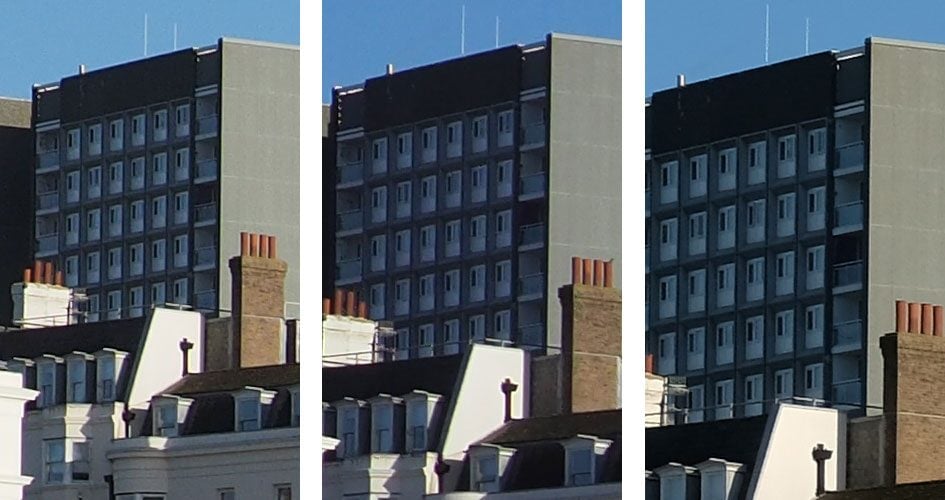
Above left: Olympus OMD EM1 (JPEG) using Leica 25mm f1.4 at f4, 200 ISO. Above center: Olympus OMD EM1 Mark II (JPEG) using Leica 25mm f1.4 at f4, 200 ISO. Above right: Fujifilm XT2 (JPEG) using Fujinon XF 35mm f2 at f5.6, 200 ISO.
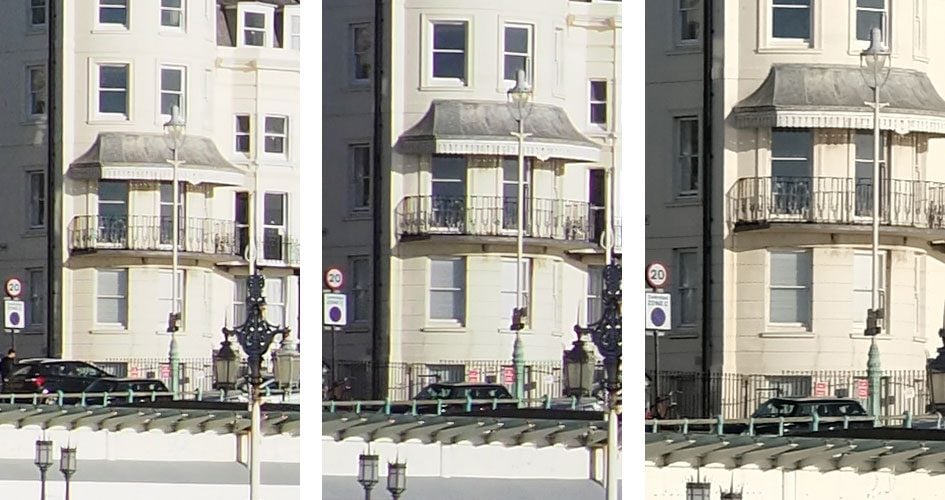
Above left: Olympus OMD EM1 (JPEG) using Leica 25mm f1.4 at f4, 200 ISO. Above center: Olympus OMD EM1 Mark II (JPEG) using Leica 25mm f1.4 at f4, 200 ISO. Above right: Fujifilm XT2 (JPEG) using Fujinon XF 35mm f2 at f5.6, 200 ISO.
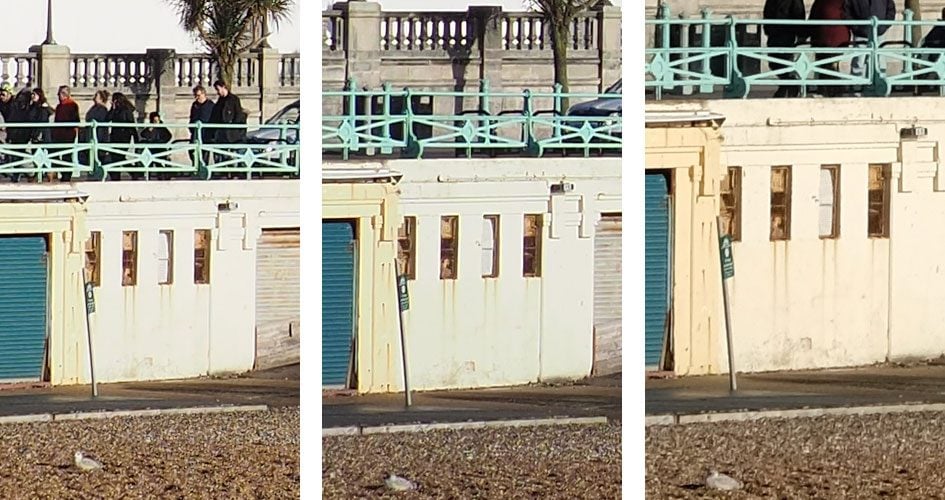
Above left: Olympus OMD EM1 (JPEG) using Leica 25mm f1.4 at f4, 200 ISO. Above center: Olympus OMD EM1 Mark II (JPEG) using Leica 25mm f1.4 at f4, 200 ISO. Above right: Fujifilm XT2 (JPEG) using Fujinon XF 35mm f2 at f5.6, 200 ISO.
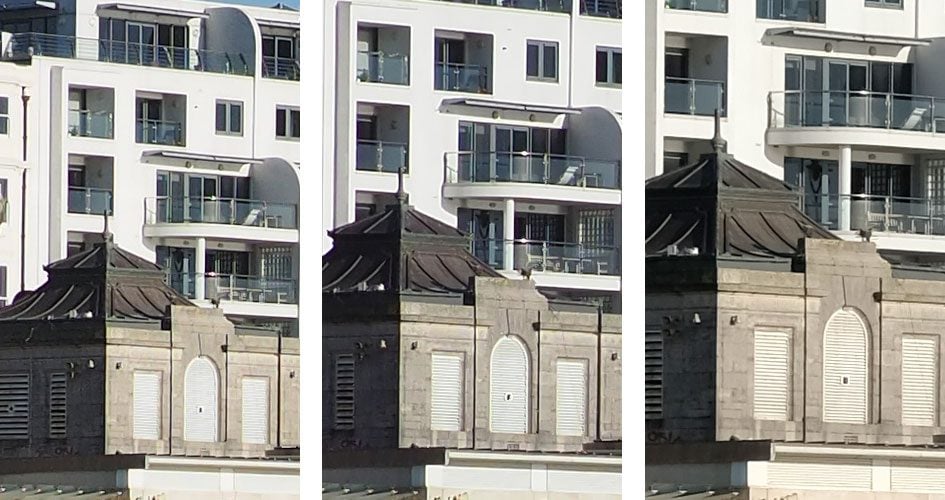
Above left: Olympus OMD EM1 (JPEG) using Leica 25mm f1.4 at f4, 200 ISO. Above center: Olympus OMD EM1 Mark II (JPEG) using Leica 25mm f1.4 at f4, 200 ISO. Above right: Fujifilm XT2 (JPEG) using Fujinon XF 35mm f2 at f5.6, 200 ISO.
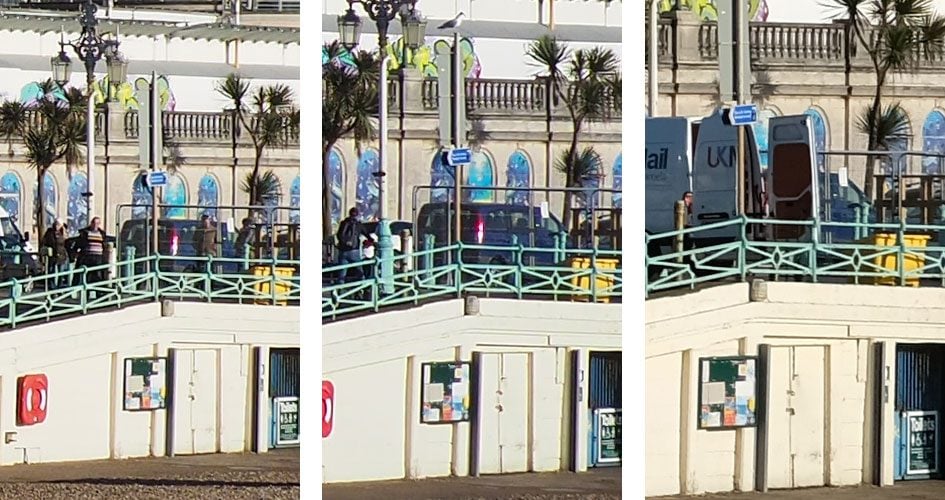
Above left: Olympus OMD EM1 (JPEG) using Leica 25mm f1.4 at f4, 200 ISO. Above center: Olympus OMD EM1 Mark II (JPEG) using Leica 25mm f1.4 at f4, 200 ISO. Above right: Fujifilm XT2 (JPEG) using Fujinon XF 35mm f2 at f5.6, 200 ISO.
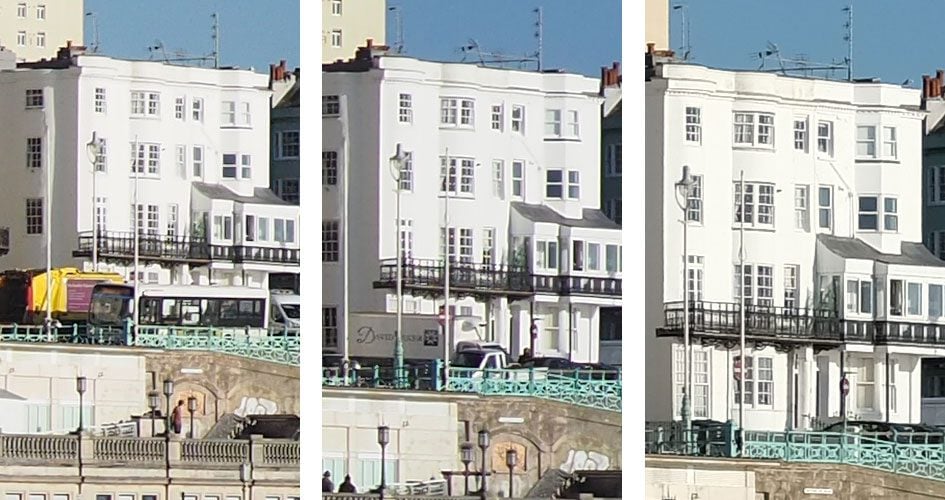
Above left: Olympus OMD EM1 (JPEG) using Leica 25mm f1.4 at f4, 200 ISO. Above center: Olympus OMD EM1 Mark II (JPEG) using Leica 25mm f1.4 at f4, 200 ISO. Above right: Fujifilm XT2 (JPEG) using Fujinon XF 35mm f2 at f5.6, 200 ISO.
Panasonic Lumix G80 / G85 vs Olympus OMD EM1 Mark II vs Fujifilm XT2 quality (for reference)
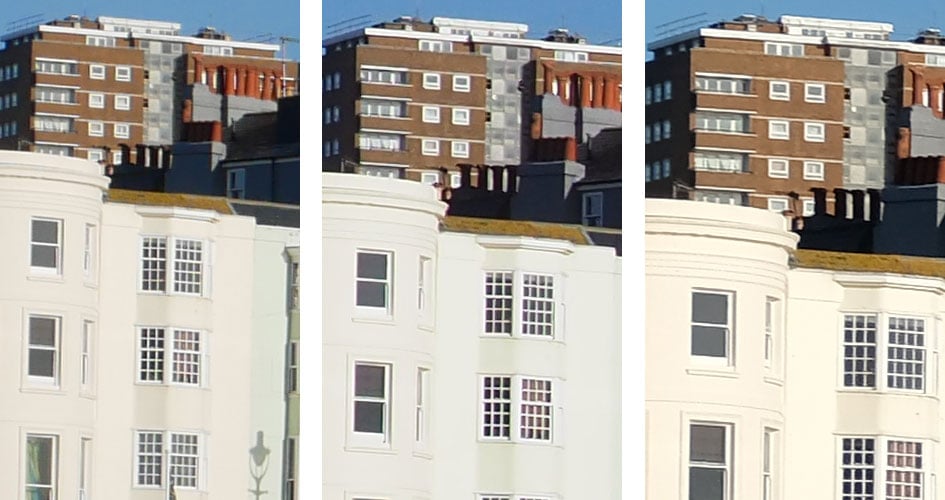
Above left: Panasonic Lumix G80 / G85 (JPEG) using Leica 25mm f1.4 at f4, 200 ISO. Above center: Olympus OMD EM1 Mark II (JPEG) using Leica 25mm f1.4 at f4, 200 ISO. Above right: Fujifilm XT2 (JPEG) using Fujinon XF 35mm f2 at f5.6, 200 ISO.
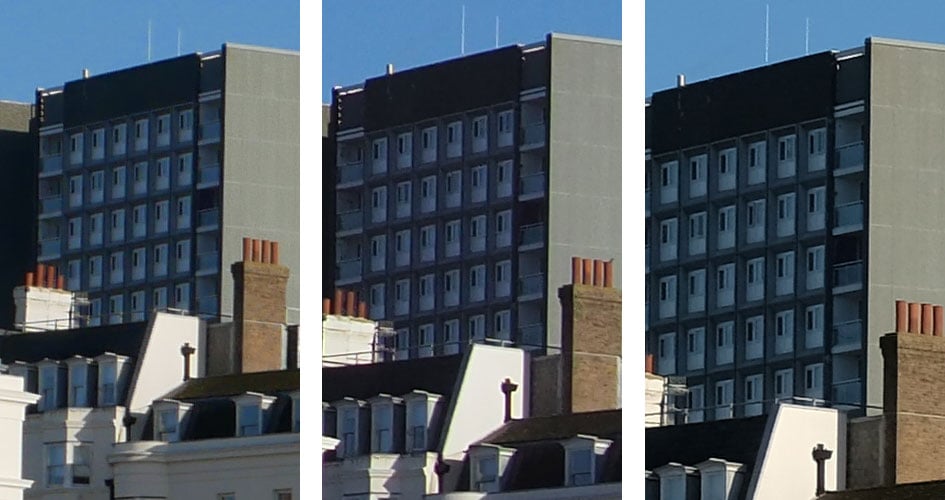
Above left: Panasonic Lumix G80 / G85 (JPEG) using Leica 25mm f1.4 at f4, 200 ISO. Above center: Olympus OMD EM1 Mark II (JPEG) using Leica 25mm f1.4 at f4, 200 ISO. Above right: Fujifilm XT2 (JPEG) using Fujinon XF 35mm f2 at f5.6, 200 ISO.
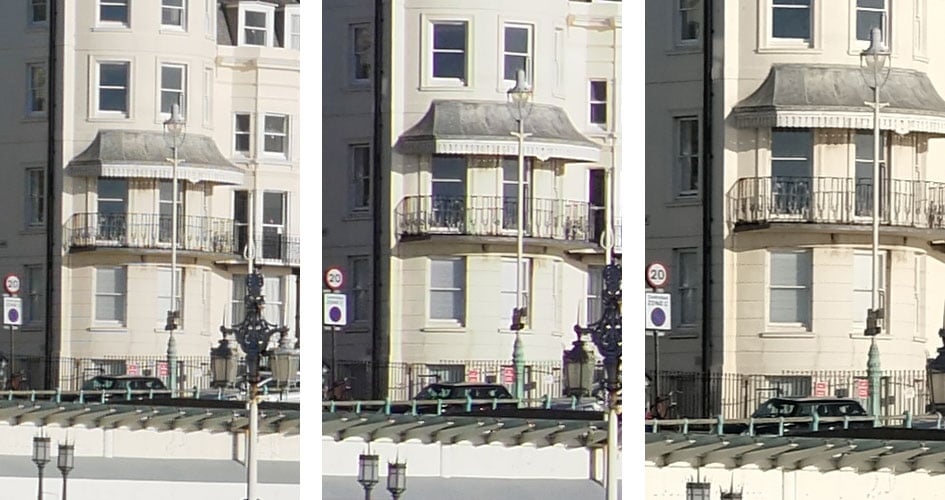
Above left: Panasonic Lumix G80 / G85 (JPEG) using Leica 25mm f1.4 at f4, 200 ISO. Above center: Olympus OMD EM1 Mark II (JPEG) using Leica 25mm f1.4 at f4, 200 ISO. Above right: Fujifilm XT2 (JPEG) using Fujinon XF 35mm f2 at f5.6, 200 ISO.
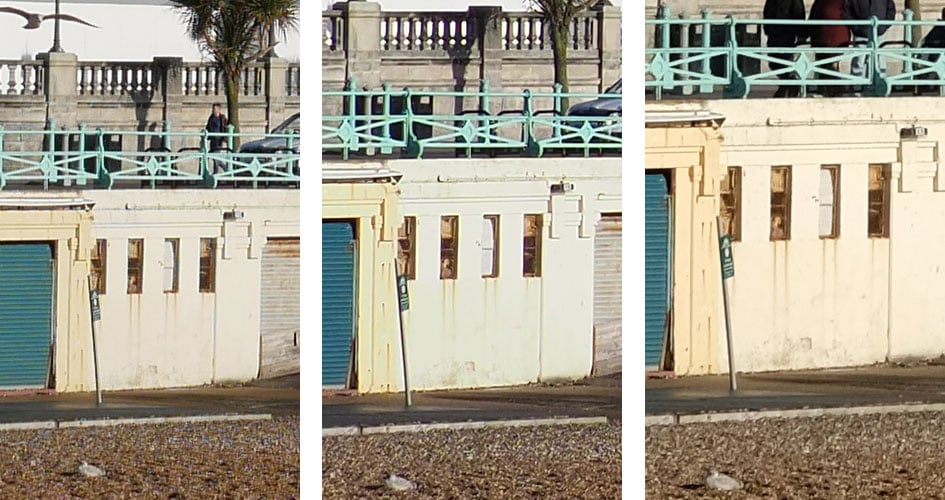
Above left: Panasonic Lumix G80 / G85 (JPEG) using Leica 25mm f1.4 at f4, 200 ISO. Above center: Olympus OMD EM1 Mark II (JPEG) using Leica 25mm f1.4 at f4, 200 ISO. Above right: Fujifilm XT2 (JPEG) using Fujinon XF 35mm f2 at f5.6, 200 ISO.
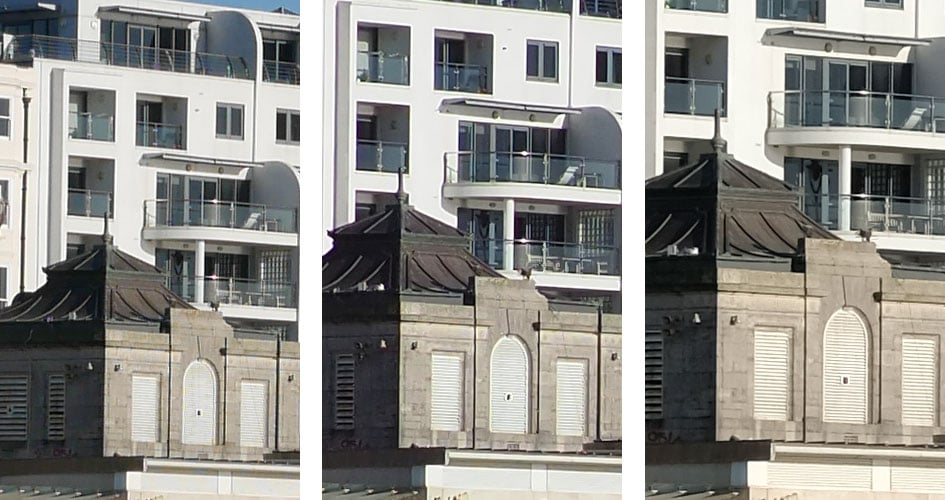
Above left: Panasonic Lumix G80 / G85 (JPEG) using Leica 25mm f1.4 at f4, 200 ISO. Above center: Olympus OMD EM1 Mark II (JPEG) using Leica 25mm f1.4 at f4, 200 ISO. Above right: Fujifilm XT2 (JPEG) using Fujinon XF 35mm f2 at f5.6, 200 ISO.
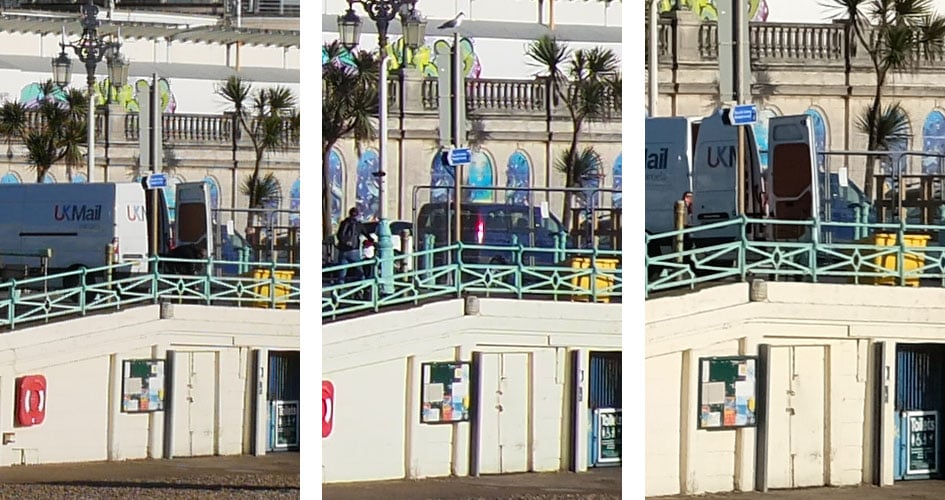
Above left: Panasonic Lumix G80 / G85 (JPEG) using Leica 25mm f1.4 at f4, 200 ISO. Above center: Olympus OMD EM1 Mark II (JPEG) using Leica 25mm f1.4 at f4, 200 ISO. Above right: Fujifilm XT2 (JPEG) using Fujinon XF 35mm f2 at f5.6, 200 ISO.
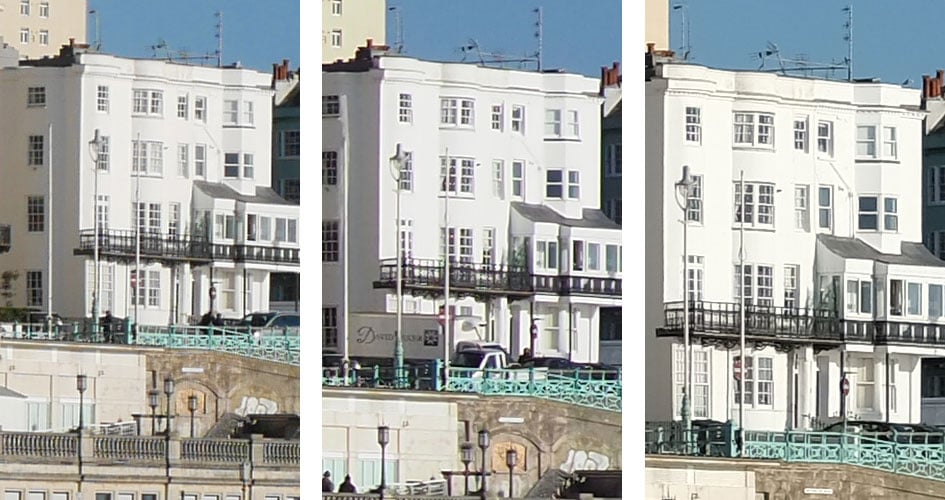
Above left: Panasonic Lumix G80 / G85 (JPEG) using Leica 25mm f1.4 at f4, 200 ISO. Above center: Olympus OMD EM1 Mark II (JPEG) using Leica 25mm f1.4 at f4, 200 ISO. Above right: Fujifilm XT2 (JPEG) using Fujinon XF 35mm f2 at f5.6, 200 ISO.
Olympus OMD EM1 Mark II noise results
To compare noise levels in low light, I photographed this scene with the Olympus OMD EM1 Mark I and II, both using the same Leica 25mm f1.4 lens, closed to f4 for optimal quality for this format. I additionally shot the same scene moments later with the Fujifilm XT2, fitted with the XF 35mm f2 prime, closed to f5.6 for optimal quality on this format. I shot with each camera in RAW+JPEG mode with the default settings. I’m waiting for full support from Adobe before comparing RAW files, so for now I’m presenting JPEGs straight out-of-camera. As always the crops below are taken from the area marked with a red rectangle and are presented here at 100%.
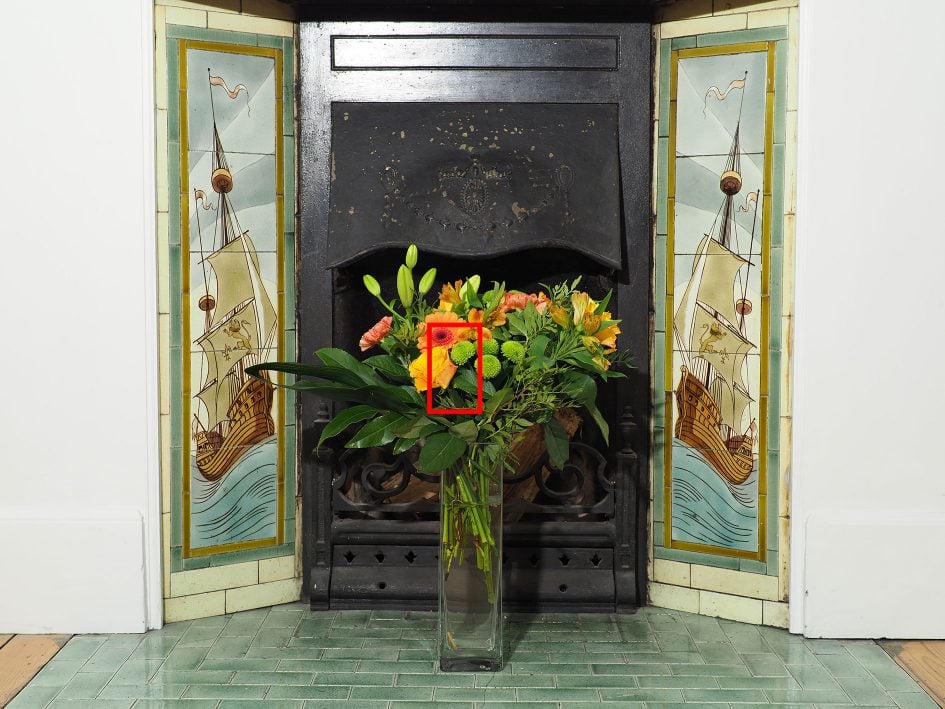
Note the Micro Four Thirds bodies capture 4:3 shaped images in their native format, while the Fujifilm XT2 captures wider 3:2 shaped images. As such it’s not possible to make an absolute like-for-like comparison between them, and there’s the added complication of different field-reduction factors. For this comparison I fine-tuned the shooting distance to match the vertical height of the Fujifilm and Olympus images. As such, we’re comparing vertical resolution here and effectively ignoring the extra pixels contained in the wider images of the Fujifilm. So the crops from the EM1 Mark II and XT2 share a similar area. Both are tighter crops than the original EM1 which has a lower resolution. But what difference do the resolutions, sensor sizes – and ages – make to their relative noise performance?
The most obvious difference between them concerns their relative sharpness when using out-of-camera JPEGs using the default settings. Both Olympus bodies, especially the original EM1 Mark I, are applying visibly greater sharpening than the Fujifilm XT2. Sometimes, again especially on the EM1 Mark I, this could result in images looking a little over-cooked, but there’s no denying it brings out the finest details and here allows both Olympus bodies to look noticeably crisper than the Fujifilm. I actually like the Olympus approach, but do look closely and you’ll notice the XT2 is still capturing the detail, it’s just not sharpening it as much in the processing. I would however say the EM1 Mark II is a little more toned-down than the original EM1 which is no bad thing. I should also add that the Low ISO setting on the EM1 Mark II is equivalent to a lower 64 ISO value than its rivals here.
The results look fairly even matched up to and including 800 ISO, but it’s at 1600 ISO that some differences begin to emerge. First, the EM1 Mark II seems to visibly suffer from the impact of noise and noise reduction more than its predecessor and from 1600 to 12800 ISO I’d actually say I prefer the output from the Mark I over the Mark II – again for out-of-camera JPEGS with the default settings, pixel-peeped at 100%. This shouldn’t be surprising though as while the EM1 Mark II sensor is a newer generation than the Mark I, it’s still packing more pixels into the same area and devoting more of them to autofocus duties.
Looking at the Fujifilm XT2 crops alongside, you’ll notice it doesn’t seem as affected by noise at the higher ISOs. As the detail softens on the Olympus bodies, it remains more visible and better-defined on the XT2. To be fair, this only really happens from 6400 ISO upwards, but at 12800 and especially 25600 ISO, the difference between the XT2 and the two Olympus bodies is quite striking. Clearly the slightly larger sensor of the Fujifilm XT2 is giving it the advantage at very high ISOs.
But below 6400 ISO and especially at 1600 ISO and under, the three cameras are fairly well-matched and most of the differences you’re seeing are down to their relative JPEG processing strategies. If you shoot mostly in these low to mid ISO ranges I don’t think you’ll see much benefit of the XT2’s bigger sensor.
I should also add this page purely isolates relative ISO performance, but doesn’t factor-in real-World usage. If you need a high ISO to freeze motion in low light, then a larger sensor is definitely beneficial. But if the subject is static, or you don’t mind some subject motion, you can exploit the superb built-in stabilisation of the Olympus bodies to handhold unstabilised lenses at shutter speeds much slower than the XT2 – in turn allowing you to exploit lower ISOs to maintain quality. As someone who shoots a lot of architecture with the EM1, I find I can mostly shoot at 400 ISO or below under almost any condition and very rarely need to choose the higher ISOs. So when looking at ISO comparisons, always think about what actual sensitivities you’re likely to use in real-life. Sports, wildlife, street? You’ll need those higher ISOs to freeze them in low light. But landscape and architecture? You’ll be surprised what you can get away with thanks to very effective stabilisation.
Scroll down to see the Lumix G80 / G85 included in the results, or skip to my sample images!
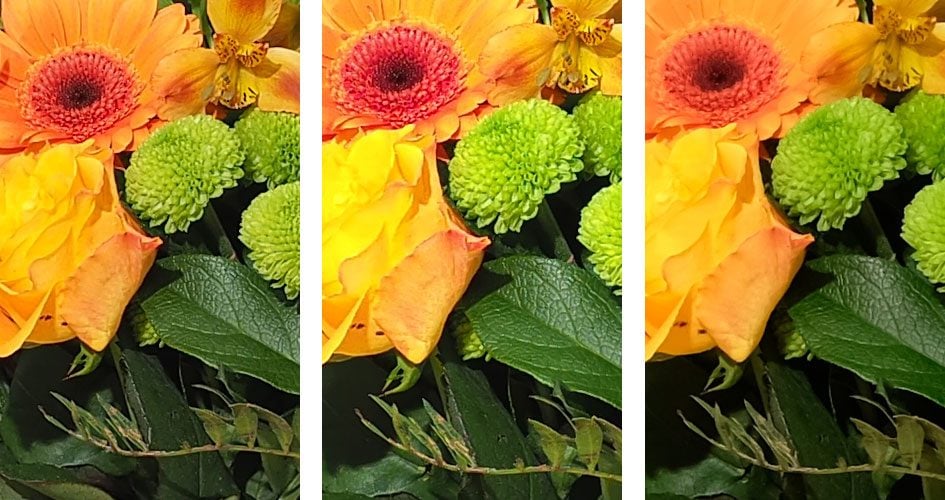
Above left: Olympus OMD EM1 (JPEG) using Leica 25mm f1.4 at f4 Low (100 ISO). Above center: Olympus OMD EM1 Mark II (JPEG) using Leica 25mm f1.4 at f4 Low (64 ISO). Above right: Fujifilm XT2 (JPEG) using Fujinon XF 35mm f2 at f5.6 100 ISO
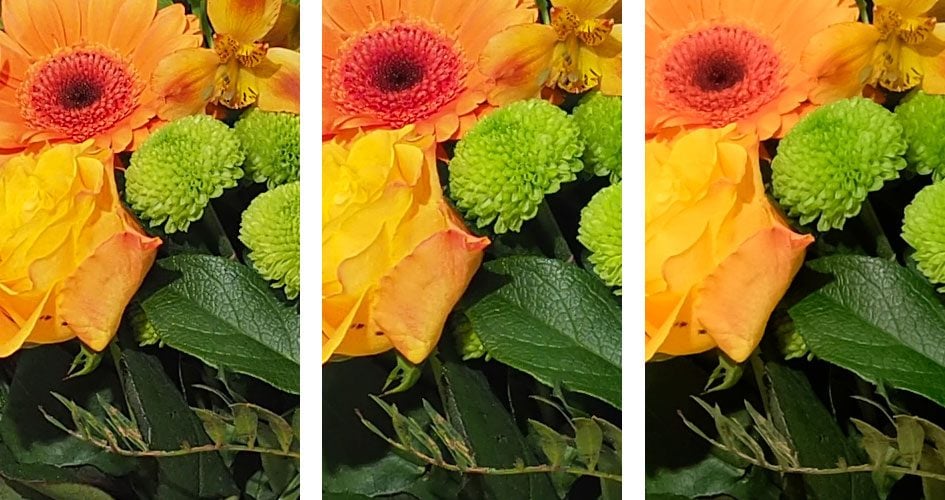
Above left: Olympus OMD EM1 (JPEG) using Leica 25mm f1.4 at f4, 200 ISO. Above center: Olympus OMD EM1 Mark II (JPEG) using Leica 25mm f1.4 at f4, 200 ISO. Above right: Fujifilm XT2 (JPEG) using Fujinon XF 35mm f2 at f5.6, 200 ISO.
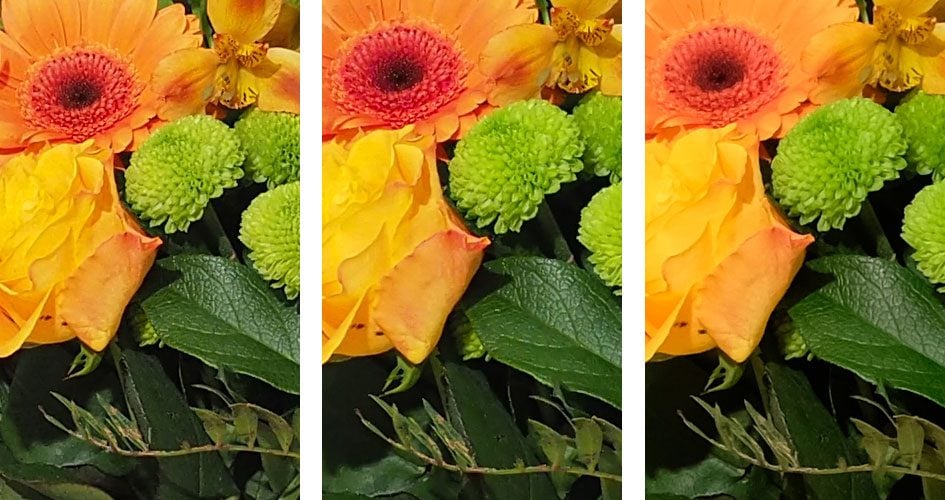
Above left: Olympus OMD EM1 (JPEG) using Leica 25mm f1.4 at f4, 400 ISO. Above center: Olympus OMD EM1 Mark II (JPEG) using Leica 25mm f1.4 at f4, 400 ISO. Above right: Fujifilm XT2 (JPEG) using Fujinon XF 35mm f2 at f5.6, 400 ISO.
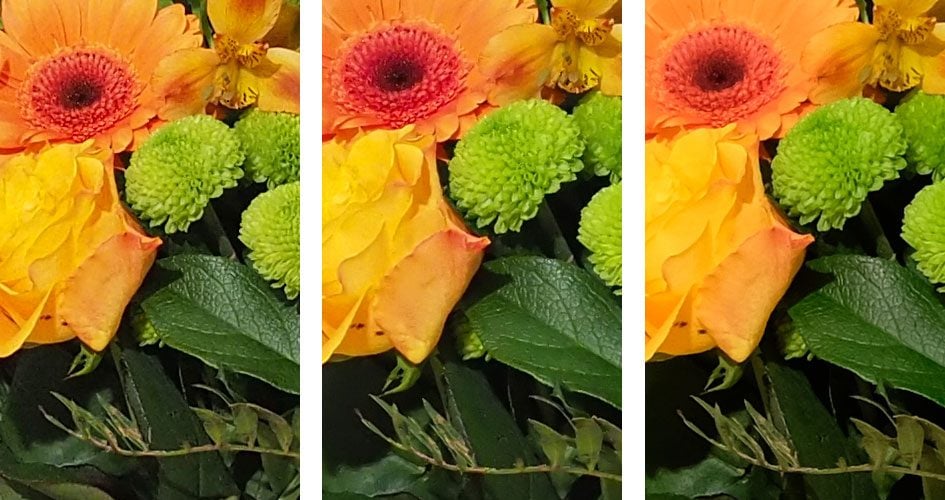
Above left: Olympus OMD EM1 (JPEG) using Leica 25mm f1.4 at f4, 800 ISO. Above center: Olympus OMD EM1 Mark II (JPEG) using Leica 25mm f1.4 at f4, 800 ISO. Above right: Fujifilm XT2 (JPEG) using Fujinon XF 35mm f2 at f5.6, 800 ISO.
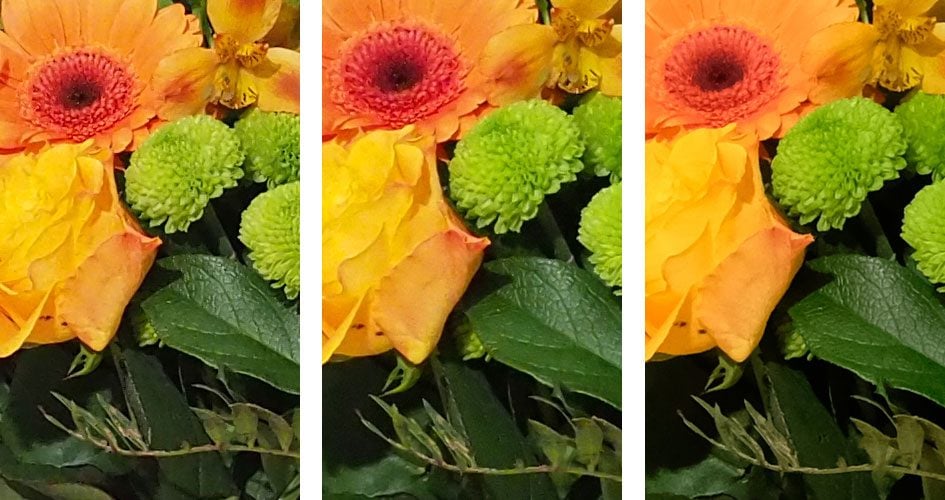
Above left: Olympus OMD EM1 (JPEG) using Leica 25mm f1.4 at f4, 1600 ISO. Above center: Olympus OMD EM1 Mark II (JPEG) using Leica 25mm f1.4 at f4, 1600 ISO. Above right: Fujifilm XT2 (JPEG) using Fujinon XF 35mm f2 at f5.6, 1600 ISO.
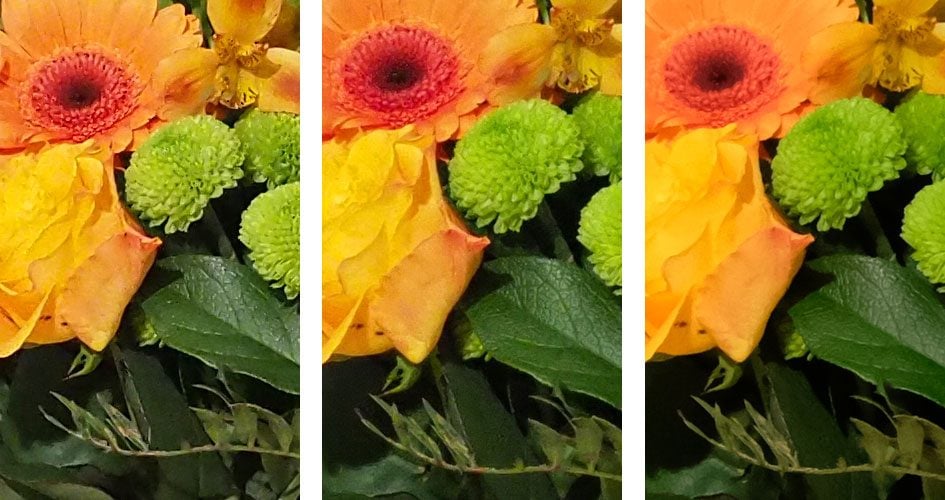
Above left: Olympus OMD EM1 (JPEG) using Leica 25mm f1.4 at f4, 3200 ISO. Above center: Olympus OMD EM1 Mark II (JPEG) using Leica 25mm f1.4 at f4, 3200 ISO. Above right: Fujifilm XT2 (JPEG) using Fujinon XF 35mm f2 at f5.6, 3200 ISO.
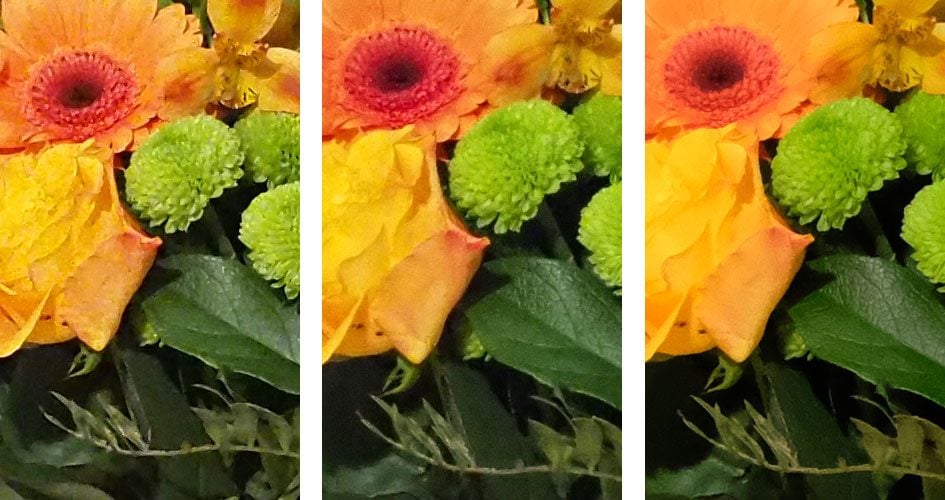
Above left: Olympus OMD EM1 (JPEG) using Leica 25mm f1.4 at f4, 6400 ISO. Above center: Olympus OMD EM1 Mark II (JPEG) using Leica 25mm f1.4 at f4, 6400 ISO. Above right: Fujifilm XT2 (JPEG) using Fujinon XF 35mm f2 at f5.6, 6400 ISO.
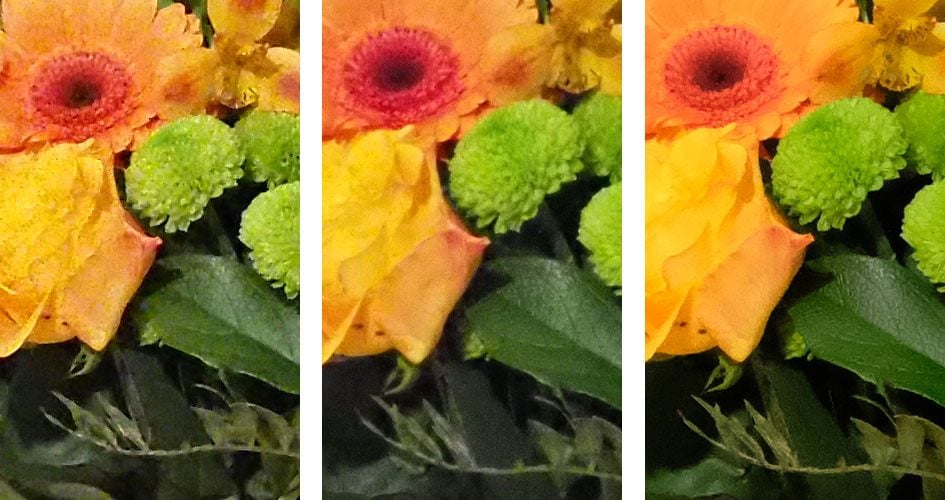
Above left: Olympus OMD EM1 (JPEG) using Leica 25mm f1.4 at f4, 12800 ISO. Above center: Olympus OMD EM1 Mark II (JPEG) using Leica 25mm f1.4 at f4, 12800 ISO. Above right: Fujifilm XT2 (JPEG) using Fujinon XF 35mm f2 at f5.6, 12800 ISO.
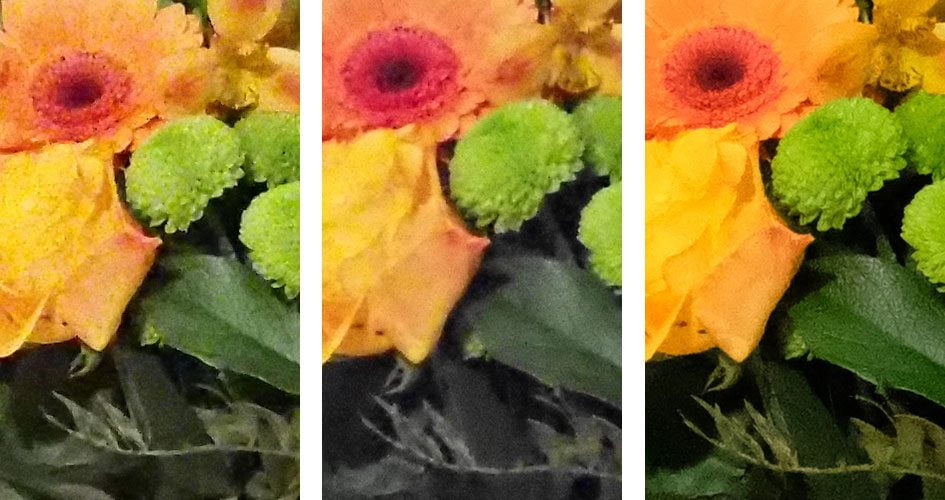
Above left: Olympus OMD EM1 (JPEG) using Leica 25mm f1.4 at f4, 25600 ISO. Above center: Olympus OMD EM1 Mark II (JPEG) using Leica 25mm f1.4 at f4, 25600 ISO. Above right: Fujifilm XT2 (JPEG) using Fujinon XF 35mm f2 at f5.6, 25600 ISO.

Above left: Olympus OMD EM1 (JPEG) using Leica 25mm f1.4 at f4, 51200 ISO not available. Above center: Olympus OMD EM1 Mark II (JPEG) using Leica 25mm f1.4 at f4, 51200 ISO not available. Above right: Fujifilm XT2 (JPEG) using Fujinon XF 35mm f2 at f5.6, 51200 ISO.
Panasonic Lumix G80 / G85 vs Olympus OMD EM1 Mark II vs Fujifilm XT2 noise (for reference)
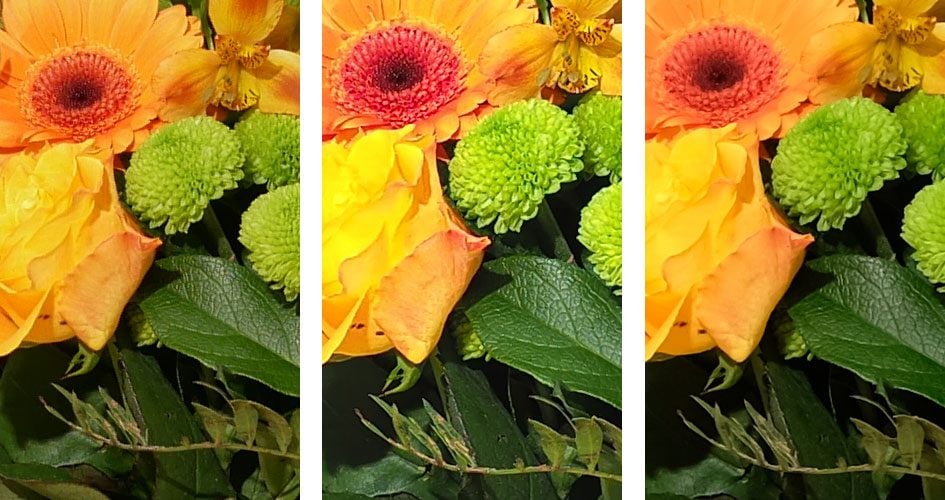
Above left: Panasonic Lumix G80 / G85 (JPEG) using Leica 25mm f1.4 at f4, low (100 ISO). Above center: Olympus OMD EM1 Mark II (JPEG) using Leica 25mm f1.4 at f4, low (64 ISO). Above right: Fujifilm XT2 (JPEG) using Fujinon XF 35mm f2 at f5.6, 100 ISO
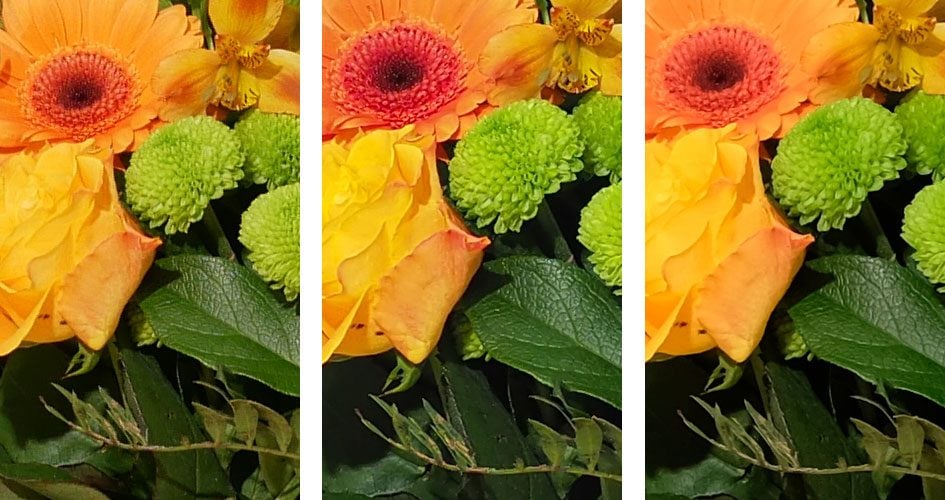
Above left: Panasonic Lumix G80 / G85 (JPEG) using Leica 25mm f1.4 at f4, 200 ISO. Above center: Olympus OMD EM1 Mark II (JPEG) using Leica 25mm f1.4 at f4, 200 ISO. Above right: Fujifilm XT2 (JPEG) using Fujinon XF 35mm f2 at f5.6, 200 ISO
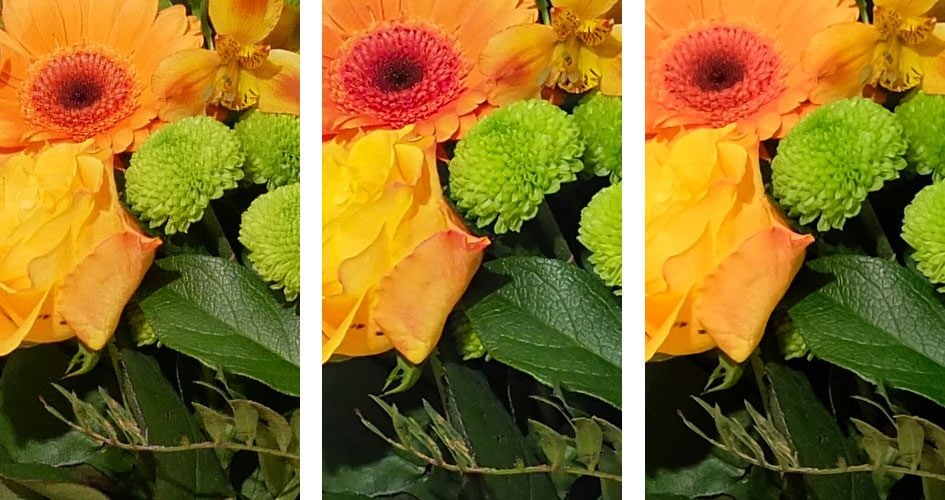
Above left: Panasonic Lumix G80 / G85 (JPEG) using Leica 25mm f1.4 at f4, 400 ISO. Above center: Olympus OMD EM1 Mark II (JPEG) using Leica 25mm f1.4 at f4, 400 ISO. Above right: Fujifilm XT2 (JPEG) using Fujinon XF 35mm f2 at f5.6, 400 ISO
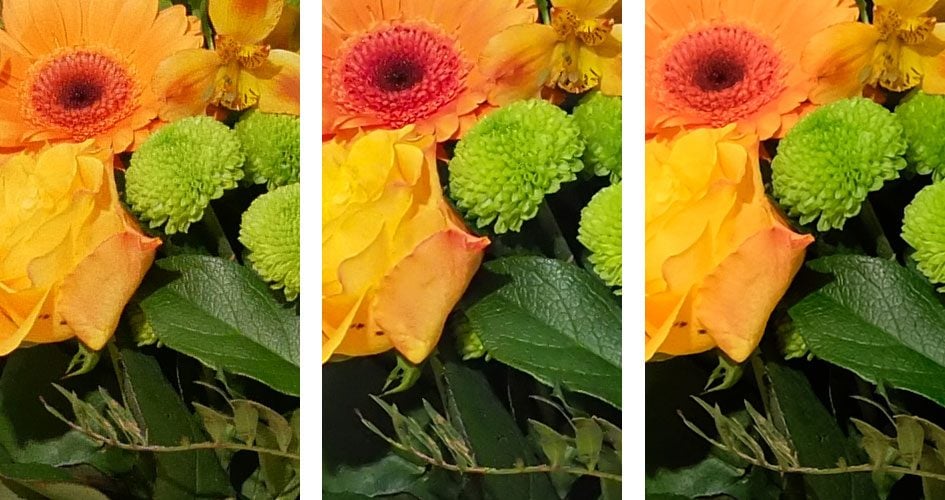
Above left: Panasonic Lumix G80 / G85 (JPEG) using Leica 25mm f1.4 at f4, 800 ISO. Above center: Olympus OMD EM1 Mark II (JPEG) using Leica 25mm f1.4 at f4, 800 ISO. Above right: Fujifilm XT2 (JPEG) using Fujinon XF 35mm f2 at f5.6, 800 ISO
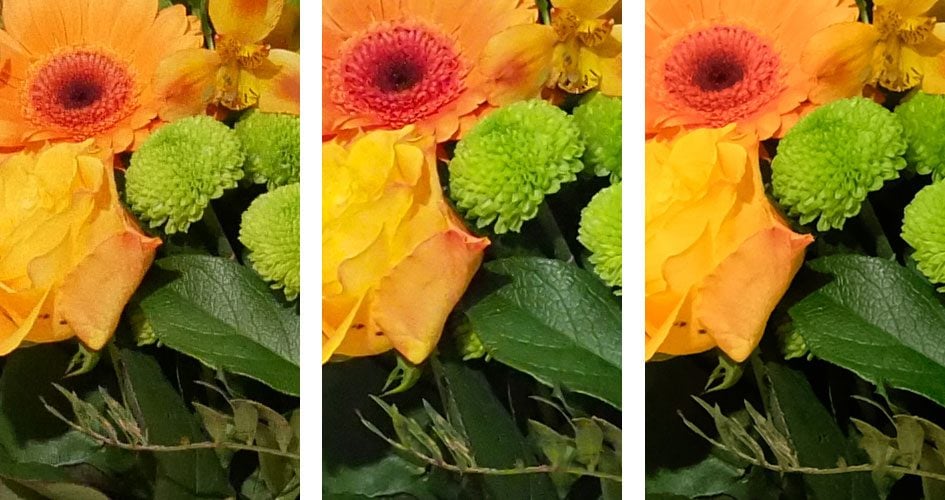
Above left: Panasonic Lumix G80 / G85 (JPEG) using Leica 25mm f1.4 at f4, 1600 ISO. Above center: Olympus OMD EM1 Mark II (JPEG) using Leica 25mm f1.4 at f4, 1600 ISO. Above right: Fujifilm XT2 (JPEG) using Fujinon XF 35mm f2 at f5.6, 1600 ISO
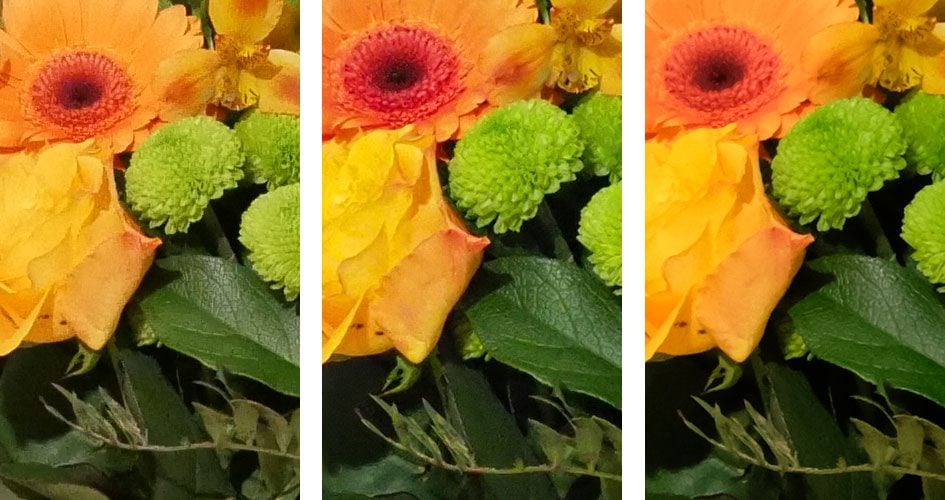
Above left: Panasonic Lumix G80 / G85 (JPEG) using Leica 25mm f1.4 at f4, 3200 ISO. Above center: Olympus OMD EM1 Mark II (JPEG) using Leica 25mm f1.4 at f4, 3200 ISO. Above right: Fujifilm XT2 (JPEG) using Fujinon XF 35mm f2 at f5.6, 3200 ISO
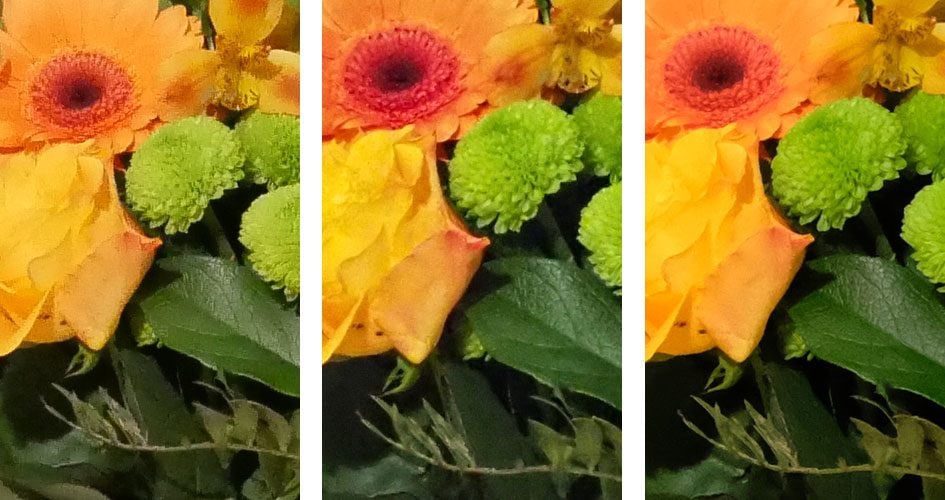
Above left: Panasonic Lumix G80 / G85 (JPEG) using Leica 25mm f1.4 at f4, 6400 ISO. Above center: Olympus OMD EM1 Mark II (JPEG) using Leica 25mm f1.4 at f4, 6400 ISO. Above right: Fujifilm XT2 (JPEG) using Fujinon XF 35mm f2 at f5.6, 6400 ISO
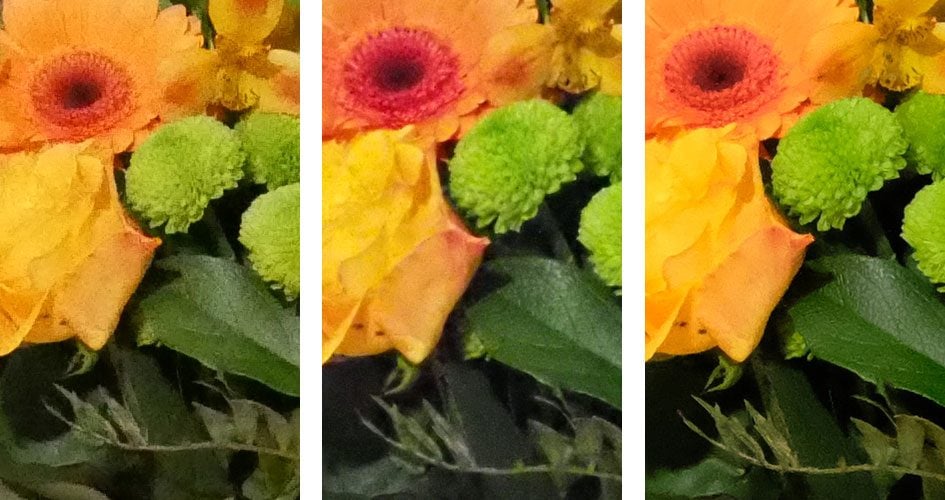
Above left: Panasonic Lumix G80 / G85 (JPEG) using Leica 25mm f1.4 at f4, 12800 ISO. Above center: Olympus OMD EM1 Mark II (JPEG) using Leica 25mm f1.4 at f4, 12800 ISO. Above right: Fujifilm XT2 (JPEG) using Fujinon XF 35mm f2 at f5.6, 12800 ISO
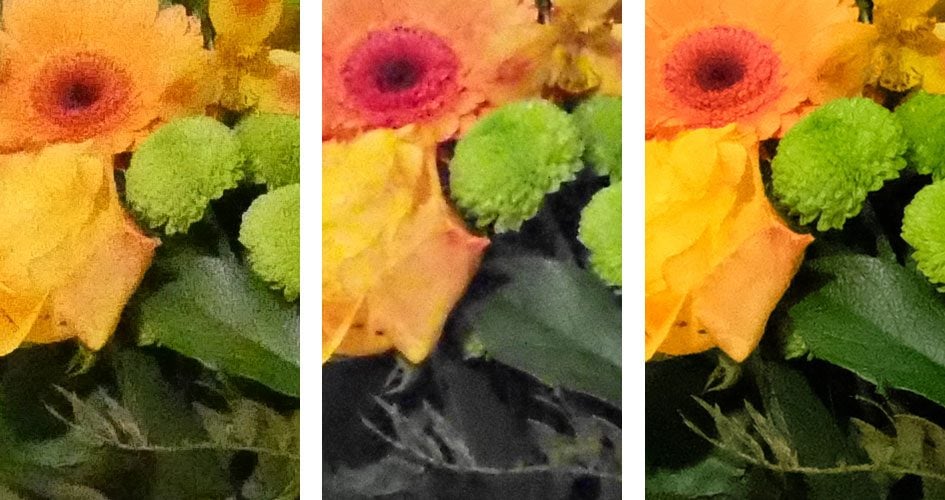
Above left: Panasonic Lumix G80 / G85 (JPEG) using Leica 25mm f1.4 at f4, 25600 ISO. Above center: Olympus OMD EM1 Mark II (JPEG) using Leica 25mm f1.4 at f4, 25600 ISO. Above right: Fujifilm XT2 (JPEG) using Fujinon XF 35mm f2 at f5.6, 25600 ISO.
Check prices at Amazon, B&H, Adorama, eBay or Wex. Alternatively get yourself a copy of my In Camera book, an official Cameralabs T-shirt or mug, or treat me to a coffee! Thanks!




